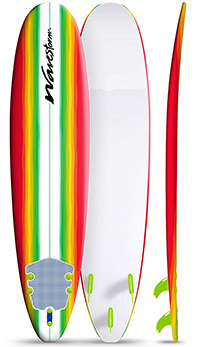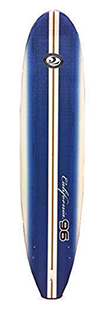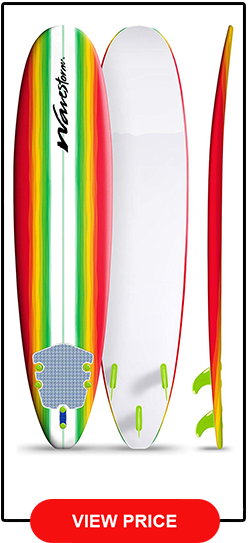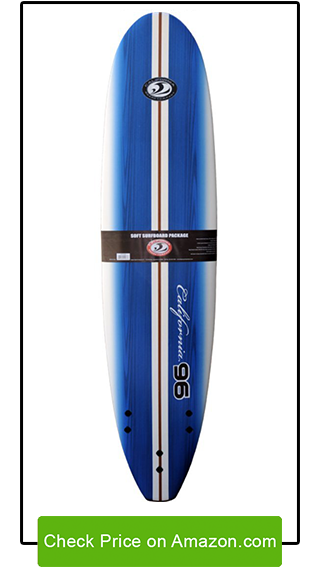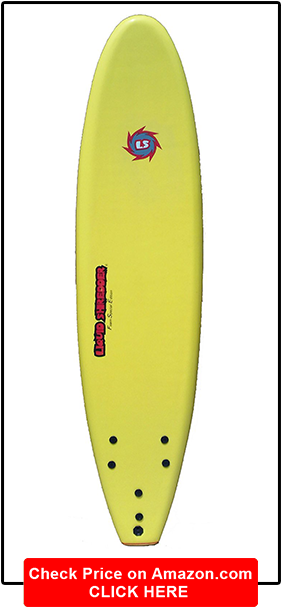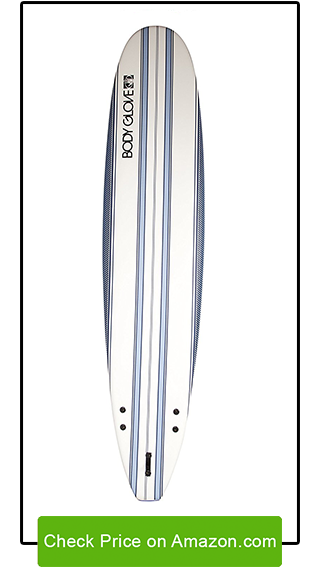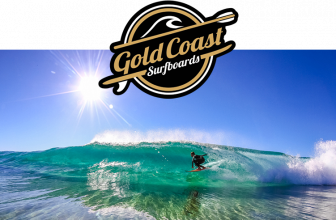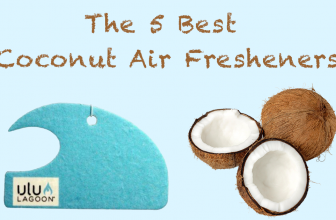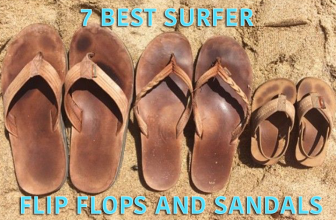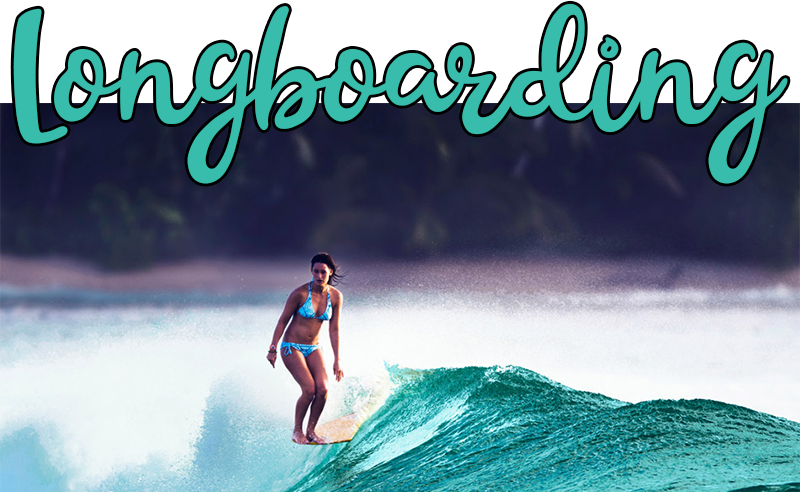
While every other kid on the block wants to learn how to throw gouges like John John Florence, there are still those who kick it old school and prefer to ride a longboard.
More...
These days, people think that longboards are only for the small and peeling days and all the action is credited to shortboarders.
But if you trace back the roots of surfing, you’d learn that the ancient Hawaiians all rode boards that were 10 to 20 feet long.
Whether it was a small day or a big day, they rode longboards.
Not everyone believes that destroying a wave with a gaffing cutback or busting out the highest air is the best way to enjoy a wave. If you like to feel the flow that comes from a deep connection between you and a wave, you will enjoy riding a longboard under your feet.
It’s not always about action-packed turns and deep barrels. Sometimes, the best kind of surfing is longboard surfing.
Are you planning on learning how to surf this season? You may want to start with longboarding. Here are the top longboard surfboards available in the nearest surf shop in your neighborhood.
Top 5 Beginner Longboards
A longboard typically measures 9 feet long but there are variations to its length depending on the rider and the conditions that he or she will ride it in.
A longboard can either have a single fin setup or a tri-fin—1 center fin and 2 side bites—setup. Read about the best beginner longboards below.
Our Top Recommended Longboards
- All-Around Classic Bestseller Longboard for Reliability and Performance
- Weight Capacity of 200lbs
- Polyethylene Build with HDPE Slick Bottom
- 3 Marine-Ply Soft Stringers
- Best Soft-Top Longboard for Intermediate Riders
- Weight Capacity of 190lbs
- Superior EPS Core with HDPE Slick Bottom
- 3 Marine Ply Stringers
- Best Soft-Top Surfboard for Beginner Riders
- Weight Capacity of 250lbs
- High-Density EPS Core with HDPE Slick Bottom
- Laminated Wooden Stringers
#1 - Wavestorm 8 ft.
5 Star Editorial Rating!
Here’s an all around longboard that you’ll likely see in all surf spots across the world. It is that well known because it is also that good and reliable.
The 8-foot Wavestorm is a classic bestseller and it is used by many surf schools because of its durable and reliable design.
- Board dimensions: 8’0” x 22.5” x 3.25”
- Board volume: 86 liters
- Board weight: 6 kgs.
- Weight capacity: can carry riders up to 90 kgs. (200 lbs.)
- Made of strong PE material
- Triple marine-ply stringers
- Water Barrier System technology
- High-density HDPE slick bottom
- Textured traction pad
- Comes with a high quality polyurethane leash
- Comes with a terry cloth board sock
#2 - California Board Company Surfboard 8 ft.
4 Star Editorial Rating!
Another great starter soft-top longboard is the California Board Company (CBC) 8-foot surfboard.
It is durable and lightweight and can help you get your fundamentals down so you can prepare yourself for a traditional surfboard sooner than you think.
It is slightly slimmer and narrower than the standard Wavestorm surfboard, thus making it a little bit easier to turn.
- Board dimensions: 8’0” x 23” x 2.4”
- Board weight: 23.6 lbs.
- 100% waterproof core
- High density EPS core
- Slick HDPE bottom
- Laminated wooden stringers
- Comes with tri-fins (1 center fin and 2 side bites)
- Comes with a polyurethane leash
#3 - Liquid Shredder FSE 9 ft. Soft Surfboard
4.5 Star Editorial Rating!
Now here’s a beginner board that is marketed towards those who have completed their first few surf lessons.
These are for novices who no longer need to be pushed into a wave by a surf instructor, but it is still a beginner’s surfboard. It can go fast because of its super slick polypropylene (PP) bottom.
It is the same size as an actual classical 9 ft. longboard so you will already be getting acquainted with the feeling of riding a real longboard.
- Board dimensions: 9’ x 24.5” x 3”
- Board weight: 17 lbs.
- Board can carry riders up to 210 lbs.
- Strong EPE foam-top deck
- Super slick PP bottom
- Two fiberglass stringers and one wooden stringer
- Heat-laminated
- Zero glue used
- More durable than other brands
- Anti-slip texture on deck
- Removable tri-fins (1 center fin and 2 side bites)
- Comes with a 90-day product warranty
#4 - 8’8” Heritage Surfboard Package
4 Star Editorial Rating
Here’s a complete beginner’s surfing package that’s hard to top. It comes with a watertight 8.8 ft. soft-top surfboard with a reinforced double concave HDPE bottom.
It was built using a closed cell and crosshatched material, making it tougher than other soft boards available in the market.
It's EPS foam is sandwiched in between a durable epoxy deck and bottom shell. Once you ride it, you will feel how smoother the glide is because of its bump-resisting design.
- Board dimensions: 8’8” x 23” x 3”
- Board volume: 86 liters
- Board weight: 17 lbs.
- Can support riders up to 250 lbs.
- Watertight EPS core
- Safety features such as rounded edges
- Bump-resistant design
- One fiberglass string and two reinforced wood stringers
- Package includes: 1 surfboard, 1 9” board bag, 1 traction pad, tri-fin set, 9 ft. PU leash, 1 Gold Coast Surfboards shirt, and 1 pack of paint pens for board art
#5 - Body Glove Soft Surfboard
5 Star Editorial Rating!
Here is another excellent choice for first time surfers.
It's sleek and classy look will turn heads the same way you’ll begin to learn how to turn with ease on this board.
The WBS top deck is water-resistant, making it a durable choice for a first-timer’s board.
The slick PE bottom adds to your gliding experience by minimizing the friction between the bottom of the board and the surface of the wave.
- Board dimensions: 8’ x 22.6” x 3”
- Board weight: 13.7 lbs.
- Hard wood marine stringers
- WBS top deck
- Slick PE bottom
- Textured deck for a no-slip grip
- Sleek and classy design
- Comes with a tri-fin setup (1 center fin and 2 side bites)
- No leash included
Choosing Your Longboard
Longboards are typically described as any surfboard that is longer than 8 feet, although competition longboards measure at 9 feet and above.
Longboards are also at least 20 inches in width and their noses are full and rounded compared to shortboards, which have narrow and pointed noses.
Longboards are good beginner boards because it is easier to paddle and catch waves with them. It is easy to fall in love with surfing when you are riding on a longboard so be sure to take the time to learn what the best longboard for you should be.
Longboard Length
A longboard can go anywhere from 8 to 14 feet in length but the most common types of longboards fall in the 9 to 10 feet range.
Anything over 10 feet is usually harder to ride and it requires a lot of experience and wave-reading abilities to be able to successfully take off on boards of those extreme lengths.
For your first every surfboard, choose a board that is between 8 feet to 9 feet long. If you are taller than 6 feet, you can choose a board that’s a little longer than 9 feet.
A longer board usually catches waves earlier than a shorter board. The downside is longer boards are harder to maneuver and turn.
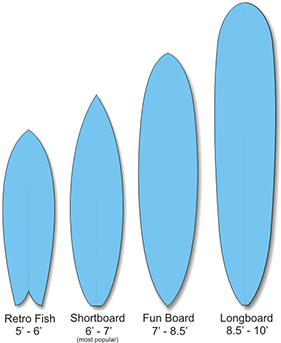
Board Shape and Design
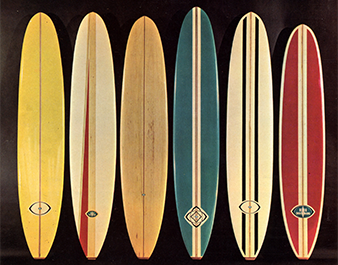
We can classify longboards into two main categories according to the surfing style they produce.
On one hand, we have the classic logs that are bulkier, heavier and wider. Their noses are blunt and have little to no rocker. Their tails are square for additional drag and hold on a wave.
These are the boards you will need if you want to get good at classical longboarding, which includes a lot of fancy footwork such as cross-stepping, nose riding, and hang tens.
The other type of longboard falls under the high performance category.
These boards are usually slimmer and narrower and are easier to turn and maneuver. The noses are also slightly pointed, although they are still rounded.
High performance longboards also have a bit more rocker to make it easier for them to go down bigger and steeper waves.
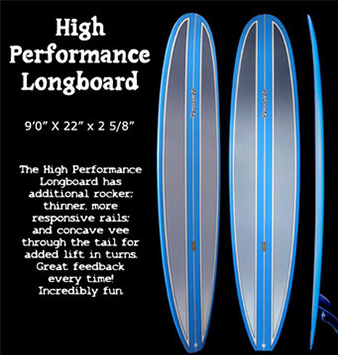
Rails
Classical longboards are built with rounder and softer rails, which are perfect for smaller waves. They just glide through the waves with little resistance.
High performance longboards have harder or sharper rails because they were designed to bite into the face of the wave for more efficient turns and maneuvers.
Most soft-top longboards come with fuller and rounded rails.
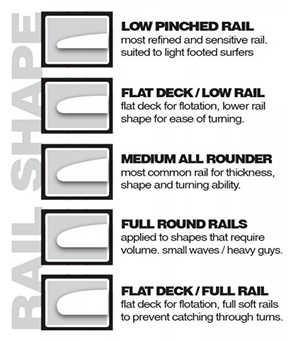
Rocker
The rocker is the concave you will find at the bottom of your surfboard. The more rocker your board has, the slower it will be, but it will be more responsive during turns.

The opposite is a flatter rocker, which results in a faster board that gets waves earlier.
However, flat to low rocker surfboards will be very difficult to turn. The more the rocker, the better for bigger surf. Meanwhile, low to flat rockers perform exceptionally well on small surf days.
Fin Set-Up
Another discerning factor when choosing your longboard is the fin set-up.
Classic logs come with long single fins to fully anchor the board into the wave, while high performance longboards carry 2+1 fin setups, making room for 1 medium-length center fin and 2 side bites.
This makes the surfboard go faster and makes it loose enough to perform quicker turns.
A long single fin is less responsive than a tri-fin setup, but it is also more suitable for classic style surfing and nose riding.
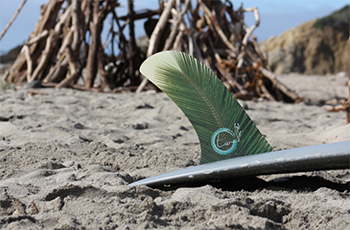
Beginner’s Guide To Longboard Surfing
Here are some of the most important skills you need to master so you can start catching your own waves in no time!
Positioning and Paddling
11x World Champion Kelly Slater is believed to have said that surfing is 90% paddling. And it’s true! If you can’t paddle well enough to get out into the lineup, you won’t be able to paddle yourself into a wave.
To paddle correctly, you will need to find that most stable spot when you’re lying down on your belly on your surfboard.
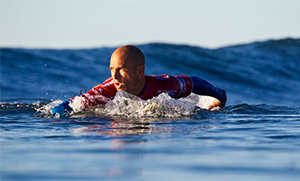
You need to be positioned in a way that your body weight is distributed evenly across the board, and make sure you are neither too forward nor backward into the board.
It also helps to slightly raise your feet when you paddle to give more stability to your chest area. Make sure to keep the nose of your board an inch above the water. Anything more than this means you are far too backward on the tail, while a dipping nose means you are too far in front.
Once you are centered correctly, paddle with deep and long strokes. This is more effective than quick and shallow strokes. Try to time your paddling with your breathing so you can really work into getting your whole body in sync with your movement.
Knowing Your Surf Stance
There are two types of stances when surfing: regular and goofy.
Regular footers stand up with their left foot forward and right foot back, while goofy footers stand with their right foot in front, and their left foot at the back.
The Pop-Up
This is what you call the move when you’re about to get up from a lying position to a standing position on your surfboard. The key is in getting up in one swift movement while maintaining your balance.
You should practice this on the ground a couple of times to familiarize your muscles with the movement. When you pop up, make sure to land with both of your feet properly distanced across the middle stringer of your surfboard to distribute weight evenly at all times.
FAQ
Is a soft-top surfboard better for beginners?
While you can learn on any surfboard you choose if you don’t stop practicing, we highly recommend getting a soft-top surfboard because it will minimize the risk of surf-related injuries. The less adept you are with board handling, the higher the chances of getting hurt. Soft and rounder rails will hopefully cushion the blow.
Prevention is better than cure so make sure to always handle your board well in and out of the water.
Should I apply wax on my soft-top longboard?
The textured deck on soft-top surfboards provides enough grip so you don’t need to apply surf wax on these boards.
Should I wear a leash?
Yes, for your safety and the safety of others.
Is it better to wear the leash on the ankle or on the calf?
As a beginner, it is better to just wear the leash on your ankle. The calf leash was designed for more advanced riders who are training how to cross-step and noseride.
Do I need to have some sort of athletic training or sports background before I surf?
Surfing uses up a completely different set of muscles than other athletic activities so it might not always be an advantage if you train in the gym or swim professionally. Surfing is all about timing and balance, and those are two skills that you can master only when you’re actually surfing.
Some balance training like skateboarding, snowboarding, or standing on a balance board can be an advantage.
Are there rules I should be aware of in the lineup?
Oh yes, surfers can be very particular with rules. The most important rule is not to drop in on anybody. Dropping in is the act of getting a wave that is already being ridden by someone much closer to the peak of the wave. Before you start catching waves, be sure to look around and observe. Study the way things work and slowly position yourself in line for your wave. Be patient. When other surfers see that you are being respectful in the lineup, they will even gladly help you catch your wave.
Most of all, smile and be friendly. Remember that everyone was a beginner once. Don’t be shy to ask questions. There’s nobody surfers hate more than a beginner who acts like a know it all. They call those people “kooks.”

